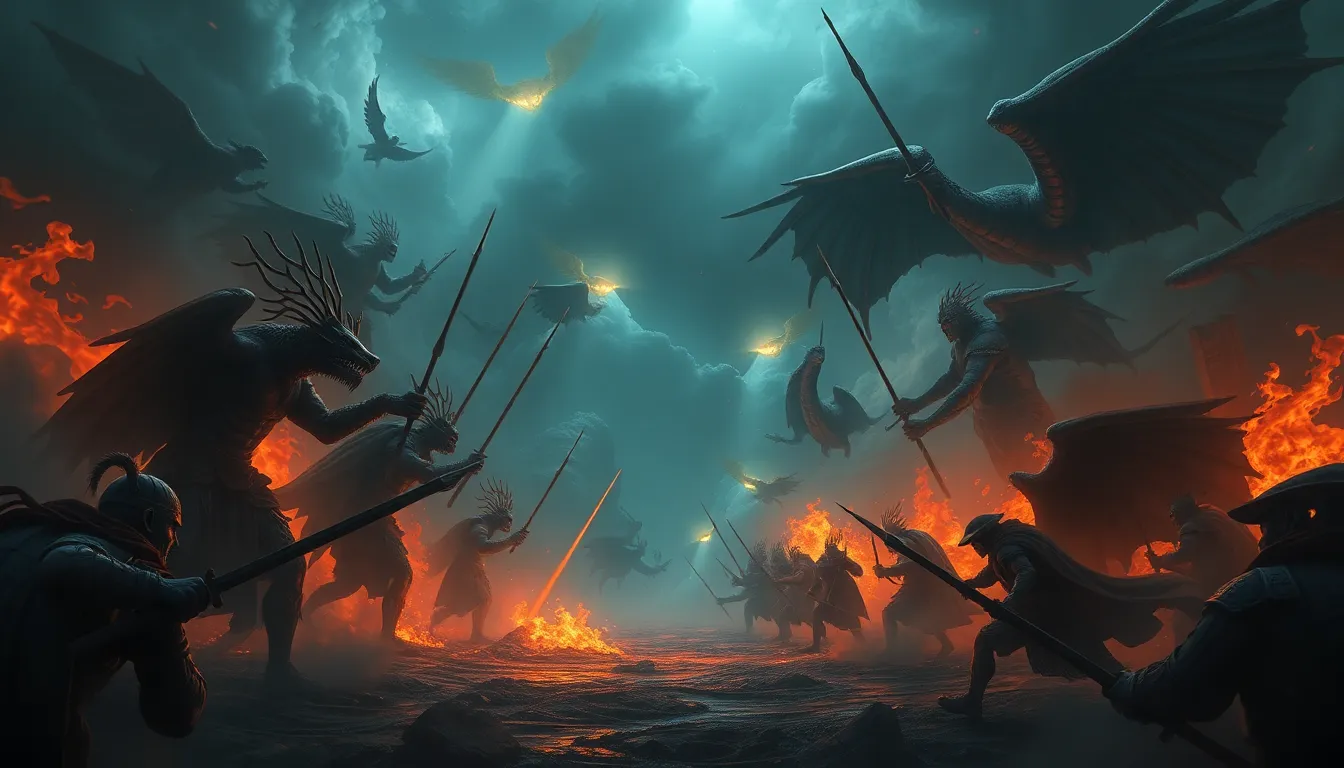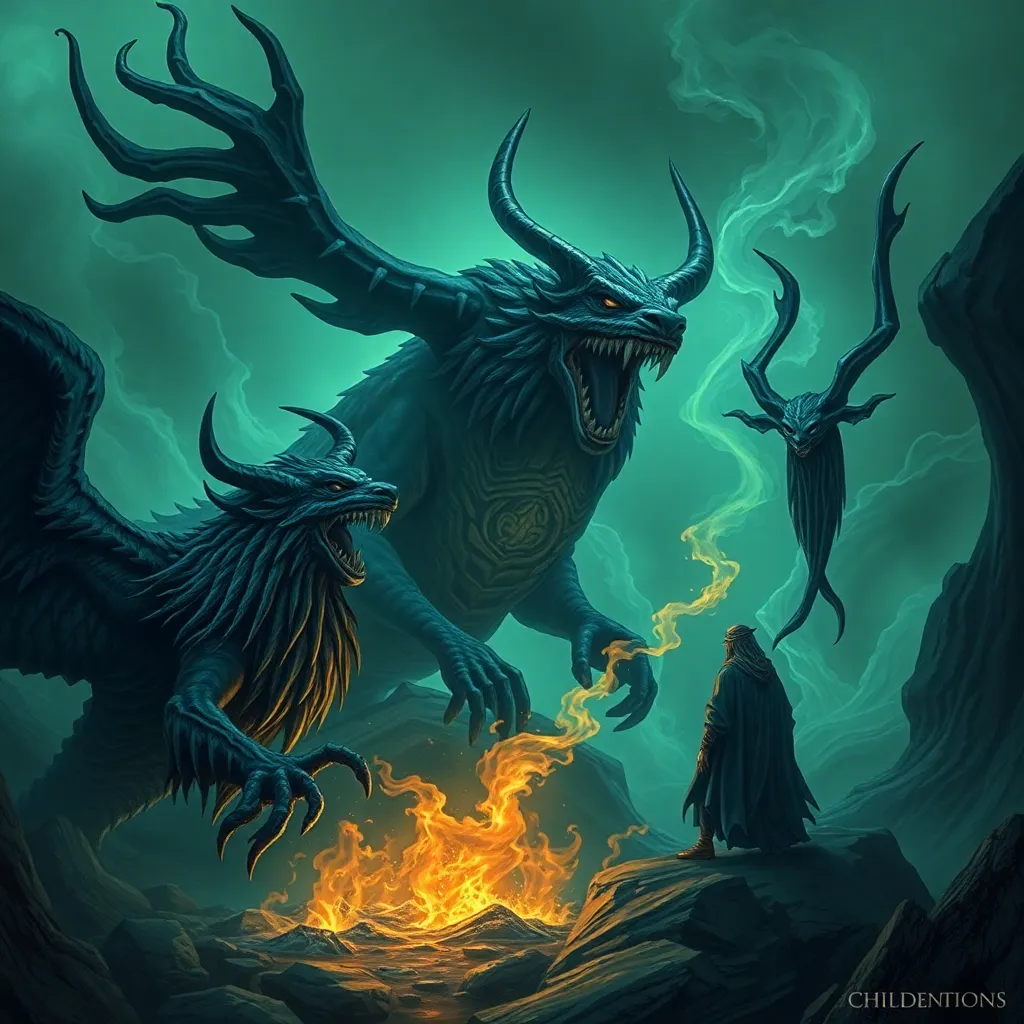Mythological Warfare: The Greatest Conflicts of All Time!
I. Introduction to Mythological Warfare
Mythological warfare refers to the epic battles and conflicts depicted in ancient myths and legends across various cultures. These wars often involve gods, heroes, and supernatural beings, shaping the narratives that have been passed down through generations. The significance of mythological warfare lies not only in its entertainment value but also in its role in explaining the human condition, societal values, and the nature of good and evil.
This article will explore several notable mythological conflicts, including the Trojan War, the Battle of the Titans, the epic stories from the Ramayana and Mahabharata, the Norse concept of Ragnarok, and the wars of the gods in Egyptian mythology. Each section will highlight key figures, themes, and the cultural implications of these legendary battles.
II. The Nature of Conflict in Mythology
In mythology, conflict often serves as a catalyst for character development and moral lessons. Here are some common themes and motifs found in mythological warfare:
- Good vs. Evil: Many myths depict a clear distinction between heroic figures and malevolent forces.
- Divine Intervention: The actions of gods often influence the outcomes of battles, reflecting their power and authority.
- Heroic Sacrifice: Characters frequently face dilemmas that test their morals and lead to significant sacrifices.
The symbolism of battles in mythology often mirrors real-world conflicts, representing the struggles of humanity, the quest for power, and the search for identity. These narratives resonate with cultural values, showcasing the virtues and vices of societies.
III. The Trojan War: A Clash of Heroes
The Trojan War is one of the most famous conflicts in Greek mythology, sparked by a dispute among the gods. The abduction of Helen, the wife of Menelaus, by Paris of Troy led to a decade-long siege of the city by Greek forces.
Key figures in this epic included:
- Achilles: The greatest Greek warrior whose rage and prowess shaped the war’s events.
- Hector: The noble Trojan prince and defender of Troy.
- Helen: The catalyst of the war whose beauty ignited the conflict.
The Trojan War’s impact on Greek culture and literature is profound, inspiring countless works including Homer’s “Iliad,” which explores themes of honor, fate, and the human condition.
IV. The Battle of the Titans: Titans vs. Olympians
The Titanomachy, the war between the Titans and the Olympian gods, is another significant mythological conflict. This battle was fought for control of the cosmos, with the Olympians ultimately emerging victorious.
Key characters included:
- Zeus: The leader of the Olympians who overthrew his father Cronus.
- Cronus: The Titan ruler who feared his children would overthrow him.
- Rhea: The mother of the Olympians who aided their rebellion.
The consequences of this battle were monumental, establishing the hierarchy of gods in Greek mythology and symbolizing the triumph of order over chaos.
V. The Ramayana: The Epic War Between Good and Evil
The Ramayana is an ancient Indian epic that narrates the story of Lord Rama’s quest to rescue his wife Sita from the demon king Ravana. This narrative encapsulates the eternal struggle between good and evil.
Key characters include:
- Rama: The hero and incarnation of the god Vishnu, embodying dharma (righteousness).
- Sita: Rama’s devoted wife, representing purity and virtue.
- Ravana: The ten-headed demon king, symbolizing the forces of evil.
The lessons from the Ramayana emphasize the importance of duty, honor, and the consequences of one’s actions, remaining relevant in contemporary discussions about morality and ethics.
VI. The Mahabharata: The Great War of Kurukshetra
The Mahabharata is another epic from India that centers around the great war of Kurukshetra between the Pandavas and Kauravas. This conflict is rich in philosophical discourse and moral dilemmas.
Major characters include:
- Yudhishthira: The eldest Pandava known for his righteousness.
- Dhritarashtra: The blind king of the Kauravas, torn between his sons and moral duty.
- Bhishma: The stalwart warrior who fought for the Kauravas out of loyalty.
The Mahabharata presents deep philosophical insights, exploring the complexities of duty, justice, and the often-painful consequences of war, making it a timeless piece of literature.
VII. Norse Mythology: Ragnarok and the End of Days
In Norse mythology, Ragnarok represents the prophesied end of the world, marked by a great battle between the gods and their enemies. This event signifies the cyclical nature of existence, with destruction leading to rebirth.
Key figures involved in Ragnarok include:
- Odin: The chief god who leads the Aesir into battle.
- Thor: The thunder god, known for his strength and bravery.
- Loki: The trickster god whose betrayal triggers the apocalypse.
The cyclical nature of conflict in Norse mythology suggests that destruction is not an end but rather a precursor to renewal, reflecting the harsh realities of life and death.
VIII. The War of the Gods in Egyptian Mythology
Egyptian mythology features numerous conflicts among gods, particularly the battles between Set and Osiris. These conflicts often symbolize the struggle between chaos and order.
The significance of these battles in Egyptian religion includes:
- Set vs. Osiris: Set’s jealousy and murder of Osiris led to a struggle for power.
- Horus vs. Set: The son of Osiris avenging his father and restoring order.
These mythological wars served to explain natural phenomena, such as the cycles of the Nile, and reinforced the values of justice and the importance of maintaining cosmic order.
IX. Comparative Analysis of Mythological Conflicts
When comparing mythological conflicts across cultures, several similarities and differences emerge:
- Similarities: Most myths feature a battle between good and evil, often involving divine beings.
- Differences: The portrayal of gods and heroes varies, influenced by cultural values and societal norms.
- Geography’s Impact: The environment shapes the narratives, with maritime cultures focusing on sea gods and agrarian societies emphasizing earth deities.
The evolution of mythological warfare continues to influence contemporary culture, as these narratives are adapted into modern literature, film, and art, showcasing their timeless relevance.
X. Conclusion: The Legacy of Mythological Warfare
The enduring themes and lessons from mythological conflicts highlight the complexities of human nature and the moral dilemmas faced throughout history. These stories not only entertain but also provide insights into the values and beliefs of the societies that created them.
The influence of mythological warfare is evident in modern storytelling and popular culture, where the archetypes of heroes, villains, and epic battles continue to resonate with audiences worldwide. As we explore these ancient narratives, we gain a deeper understanding of ourselves and the world around us.




